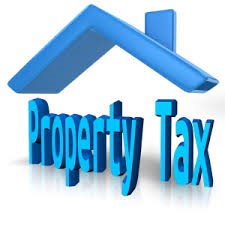by Esther van Mourik
While the Legislative Council’s December Economic Forecast highlighted improvements in economic gains, it also stated that this optimism is tempered by global economic uncertainty, indicating that the outlook still shows a heightened downside risk. It also laid out the budget realities for the Colorado General Assembly as it begins the 2017 session: “Assuming the $169.2 million shortfall in FY 2016-17 is addressed by reducing the required reserve, revenue will exceed the amount required to maintain the same level of appropriations in FY 2017-18 as is currently budgeted for FY 2016-17 by $215.7 million, or 2.1 percent.”
The Taxpayer’s Bill of Rights, or TABOR, is a Colorado constitutional provision added by an initiative approved by voters in 1992 that contains tax, revenue, and debt limitations. If a district, including the state, brings in revenue above its limit, as the state did in the 2014-15 budget year, it must refund those excess revenues in the next fiscal year. The December forecast shows that the state is currently projected to exceed the limit again in the 2017-18 and 2018-19 budget years, prompting estimated TABOR refunds of $279.4 million in budget year 2018-19 and $287.2 million in budget year 2019-20. Those refunds are made from the general fund, thereby diverting dollars that would otherwise be available to pay for programs.
The possibility of TABOR refunds raises the reality that the Office of Legislative Legal Services (Office) will see more bill requests proposing a variety of approaches to retain excess revenues. One such approach that many are talking about is creating an enterprise in order to classify certain governmental activities outside of the requirements of TABOR.
TABOR applies to all “districts,” which are defined to include the state or any local government, excluding “enterprises.” This means that an enterprise is exempt from the limitations imposed by TABOR, including TABOR’s revenue limit that restricts how much revenue a district can bring in each budget year. If an enterprise generates revenue, that revenue is not counted as part of a district’s budget year revenue for purposes of the district’s revenue limit. Creating an enterprise to classify certain governmental activities outside of TABOR before a year in which revenues are anticipated to exceed the limit, requiring TABOR refunds, has the effect of reducing, if not eliminating, the projected refunds.
Although enterprises are getting more attention recently, the exception for enterprises was included in the original initiative, and the state designated a variety of activities as enterprises starting shortly after TABOR was adopted. The multi-million dollar question is what activity can qualify as an “enterprise.” Multi-million from the perspective of what would or wouldn’t be counted as part of the state’s revenue limit, thereby possibly helping out with budget constraints, but also from the perspective of the penalties TABOR provides. If the state is successfully sued for creating an enterprise in a refund year that doesn’t fit the definition, it potentially faces serious consequences set forth in the constitution. So, while the court has never struck down an enterprise established by the state, it is clear why many want to know what can and cannot be appropriately classified as an enterprise under TABOR.
The Colorado Constitution defines an enterprise as a “government-owned business authorized to issue its own revenue bonds and receiving under 10% of annual revenue in grants from all Colorado state and local governments combined.” The reference to “annual revenue in grants” requires an annual determination that an enterprise meets all elements of the enterprise definition. Even from a lawyer’s perspective, this language is less than clear, and its meaning has been heavily debated since 1992. Part 1 of this article gives a primer about those debates. Part 2 – to be posted next week – will cover more recent discussions and will conclude with what the Office thinks we know now.
PART 1
After TABOR took effect, the General Assembly passed legislation during the 1993 session to further define some of the terms used in the new constitutional provision in order to assist in administering the law at the state level. Those definitions are laid out in section 24-77-102, C.R.S. The statutory definition of an “enterprise” is identical to what is found in the Constitution. However, that definitional section does clarify the meaning of a “grant” and the “state,” which are not defined in TABOR. Most important is the list of things that are not a “grant,” such as federal funds. The Colorado Supreme Court upheld the General Assembly’s ability to define terms since the General Assembly was seeking to comply with the provisions of TABOR by defining the terms consistent with TABOR.
During the same legislative session, the General Assembly also created several state enterprises. Those enterprises include higher education auxiliary facilities, the state lottery, a student loan division in the department of higher education, and the veterans’ community living centers. No legal challenges were made to the creation of these enterprises. Subsequently, the General Assembly enacted legislation creating additional state enterprises in 1994, 2000, 2001, 2002, 2004, 2005, 2009, and most recently in 2016. (A list of state enterprises can be found here.)
An enterprise created by a duly enacted statute is presumed constitutional. What does this presumption of constitutionality mean? If a person claims that a statute is not constitutional, the courts require that person to prove the statute’s unconstitutionality beyond a reasonable doubt (a very high standard that gives great deference to the General Assembly’s law-making authority). And, if a court can read the statute two ways, a constitutional way and an unconstitutional way, the court must choose the constitutional interpretation. (See “Statutory Construction: Legislative Intent and the Presumptions Used to Interpret Statutes”)
The first (and only) Colorado Supreme Court case that gave direct guidance regarding the creation of enterprises was decided in 1995 in what is often referred to as the Nicholl decision. The case involved the E-470 Public Highway Authority (Authority), which was created by several counties. One of the counties took issue with some of the actions the Authority was taking and sued, claiming that the Authority violated TABOR’s debt and revenue limitations. In response, the Authority claimed that it was an enterprise and thus not subject to TABOR’s limitations.
The Colorado Supreme Court broke the issue down into three questions: 1) whether the Authority is “government-owned,” which the Court dispatched with ease (the contracts creating the Authority said it was a political subdivision of the state), 2) whether the Authority is a business, and 3) whether the Authority receives more than 10% of its annual revenue in grants from the state and local governments, which the Court noted it did not. With respect to the second question, the Court said that a business is generally understood to mean an “activity which is conducted in the pursuit of benefit, gain, or livelihood.” The Court found that the Authority was organized with the express intent that it provide access to its highway in exchange for the payment of tolls and user fees, thus indicating that the Authority would fit the general understanding of a business. However, because the Authority had the power to levy a tax, a power that the Court found to be inconsistent with the characteristics of a business and the definition of an enterprise as a whole, the Court held that the Authority was not an enterprise. The General Assembly remedied the problem by immediately passing legislation to eliminate the taxing power of the E-470 Public Highway Authority. Because the Authority has continued to satisfy the three-part test every year since, it remains an enterprise to this day. The Nicholl decision established that, to qualify as a business for enterprise status, an entity’s activities have to be conducted in the pursuit of benefit, gain, or livelihood and the entity may not have the power to tax.
Because of the lack of an abundance of Colorado Supreme Court cases on this topic, secondary interpretations have been helpful. The Colorado Attorney General, private practitioners, and municipal attorneys have opined on what constitutes an enterprise, so it can be useful to consider their opinions as well.
In 1995, Gale Norton, the Colorado Attorney General at the time, wrote an opinion to answer the question of whether an enterprise providing internal services such as telecommunications and insurance operations to its government-owner, in addition to the public, disqualifies it from being a business. The conclusion was that such entities are still businesses and therefore can be enterprises. Ms. Norton stated that, in order to meet the “business” requirement, an enterprise must be independent, self-supporting, and financially distinct, and must provide goods and services for a fee. The fact that the enterprise also provides services for a fee to its government-owner doesn’t change the result because the Nicholl decision didn’t question the identity of the customers but examined the activity carried out by the entity. The opinion generally states that an enterprise’s provision of goods and services should be something that is commonly carried on for profit outside the government and that the activities should bear the indicia of arms length, market exchanges.
Amy Kennedy and Dee P. Wisor, two attorneys practicing in the area of government law, wrote an article in 1998 in The Colorado Lawyer further explaining enterprises. The authors questioned whether there is a necessity for the enterprise to have a “private business analogue” or, in other words, whether the enterprise must have a private business counterpart with customers who freely choose to use it. They argued that the Nicholl decision may have implied the private business analogue was necessary when the Colorado Supreme Court cited to an unrelated case that defined a government business as “a function of a government which offers any goods or services to the public for which there are reasonable substitutes provided by nongovernmental entities.” The authors came to this conclusion: “Unless and until the Colorado Supreme Court directly rules on whether ‘businesses’ under [TABOR] must provide services that also are offered in the private sector,” be careful.
The Colorado Municipal League (CML) has also weighed in on the issue in its publication “TABOR: A Guide to the Taxpayer’s Bill of Rights.” CML created this publication to assist municipal officials in interpreting and applying TABOR in their local government operations. In both its 1993 and 2011 revised versions, CML points out that there are two interpretations: 1) the business must have some counterpart in the private sector, the “private sector analogue”; or 2) the activity is irrelevant so long as the enterprise subsists on an annual budget which includes less than 10% in state and local grants, making it more or less self-supporting, thus making the revenue stream the determining factor. By recognizing both of these conflicting interpretations, the CML guide illustrates the difficulty of developing a consistent test to determine whether specific governmental activities can be classified as enterprises.
In 2014, the Colorado Court of Appeals issued the Colorado Bridge Enterprise or CBE decision. This case stemmed from the creation of the Colorado Bridge Enterprise in 2009, defined as a government-owned business within the Colorado Department of Transportation and authorized to impose a bridge safety surcharge on motorists’ registration fees to fix certain Colorado highway bridges. In 2012, the TABOR Foundation filed a lawsuit claiming, among other things, that the Colorado Bridge Enterprise does not qualify as an enterprise. The TABOR Foundation relied on Gale Norton’s 1995 opinion that a government-owned business must gain its revenue from market exchanges taking place in a competitive, arms-length manner. However, the Colorado Court of Appeals declined to follow that opinion and decided that the Colorado Bridge Enterprise is indeed an enterprise because it pursues a benefit (fixing bridges) and generates revenue by collecting fees from service users through car registrations, which the Court ruled is not a tax.
The Colorado Supreme Court declined to take the CBE decision up on appeal, and the Colorado Court of Appeals decision doesn’t provide a thorough analysis indicating that service users must actually attain a benefit for an activity to rise to the level of a business. We can only speculate why the Colorado Supreme Court declined to take the case. We know that Justice Eid would have reviewed the case to look at three issues, including whether an enterprise must involve market exchanges taking place in a competitive, arms-length manner. But one Supreme Court Justice’s opinion on the petition for certiorari doesn’t rise to the level of law. The CBE decision is undoubtedly current law, but it still leaves governmental entities uncertain about what activities can be designated as enterprises. Perhaps CML’s analysis that the entity’s activity is irrelevant so long as all the other factors are checked off is spot on. Perhaps not. At best, the CBE decision begs the question whether the activity, or service provided, would ever be too tenuous to reasonably argue that the entity is truly a business for purposes of enterprise status. Please tune in next week for further discussion on this topic.
 smaller group. Of course, the second case’s appropriation was made to help the small group of airline companies. The act, however, helpfully explains that the “health, safety, and welfare of the people of this state are dependent upon the continued encouragement, development, and expansion of opportunities for employment in the private sector….” In other words, an airline placing an operation within Colorado would bring jobs. Specifically, the act requires the new operation to employ 3,000 people with an average salary of at least $45,000. That many jobs would increase tax revenue, lower social welfare spending, have social benefits, etc. Therefore, the public purpose of more jobs outweighs the private interests of helping an airline.
smaller group. Of course, the second case’s appropriation was made to help the small group of airline companies. The act, however, helpfully explains that the “health, safety, and welfare of the people of this state are dependent upon the continued encouragement, development, and expansion of opportunities for employment in the private sector….” In other words, an airline placing an operation within Colorado would bring jobs. Specifically, the act requires the new operation to employ 3,000 people with an average salary of at least $45,000. That many jobs would increase tax revenue, lower social welfare spending, have social benefits, etc. Therefore, the public purpose of more jobs outweighs the private interests of helping an airline.












